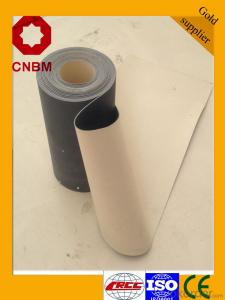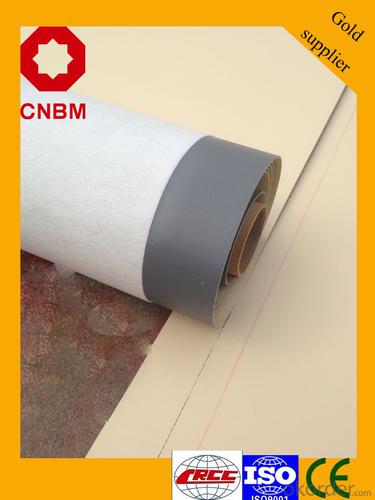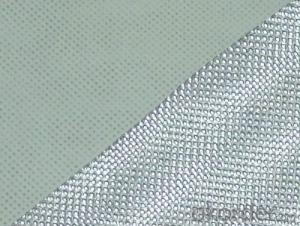Waterproof/Waterpfoofing Membrane For Roof
- Loading Port:
- Tianjin
- Payment Terms:
- TT OR LC
- Min Order Qty:
- 500 m²
- Supply Capability:
- 10000 m²/month
OKorder Service Pledge
OKorder Financial Service
You Might Also Like
Product description
Polyvinyl chloride PVC waterproof membrane is a kind of excellent performance of polymer waterproof material,PVC resin as the main raw material,add all kinds of special additive and anti-aging composition,the use of advanced equipment and advanced technology extrusion rolling is made.The product has the tensile strength and elongation high shrinkage of small,low temperature soft good,long life and other advantages, the products wide 1.2m to 3.0m, the thickness of 0.8-2.0 mm(special specifications can be customized),stable performance,reliable quality,construction is convenient.
Application Scope
The products are widely used in all kinds of civil construction,subway,tunnel,water conservancy,landfill site,chemical industry,metallurgy and other areas of waterproof seepage control,corrosion engineering
Features:
Excellent anti-aging property.
Puncture- resistant.
Welding construction,
High tensile strength, good elongation, good dimensional stability.
Good plasticity.
It has self-extinguishing from fire property.
Materials surface is smooth, fast color, stain resistance.
More wide, Wastage become less when being used.
Type:
N1—Exposed PVC waterproof membrane.
(It is mainly used as details treatment for exposed roof waterproof project)
N2—Non-exposed PVC waterproof membrane.
(It is mainly used as details treatment for non-exposed roof waterproof project)
L1—Exposed PVC waterproof membrane with fabric
(It is mainly used for exposed roof waterproof project)
L2—Non-exposed PVC waterproof membrane with fabric.
(It is mainly used for non-exposed roof waterproof project)
W1—Exposed reinforced PVC waterproof membrane .
(It is mainly used for steel structure roof exposed waterproof project)
W2—Exposed reinforced PVC waterproof membrane .
(It is mainly used for steel structure roof non-exposed waterproof project)
Advantages

Technical Parameters
No. | Item | Index | |||||
| 1 | Thickness of resin layer of the middle fabric ,mm≥ | - | - | 0.40 | 0.40 | 0.40 | |
| 2 | Tensile performance | Max tensile strength,N/cm ≥ | - | 120 | 250 | - | 120 |
| Tensile strength,NPa ≥ | 10 | - | -10 | - | - | ||
| Max elongation% ≥ | - | - | 15 | - | - | ||
| Breaking elongation % ≥ | 200 | 150 | - | 200 | 100 | ||
| 3 | Heat treatment size change rate%≤ | 2.0 | 1.0 | 0.5 | 0.1 | 0.1 | |
| 4 | Cold bonding | -25°c No cracks | |||||
| 5 | Watertightness | 0.3mPa,2h waterproof | |||||
Packaging & Shipping
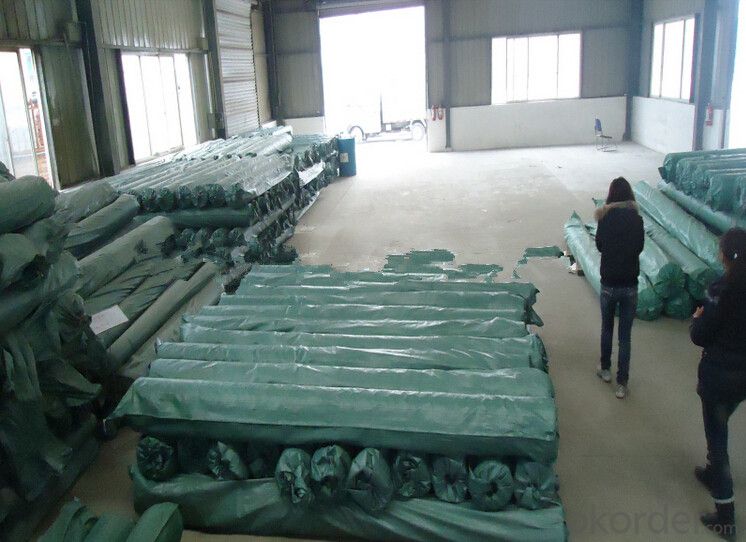
product show
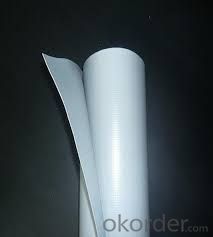
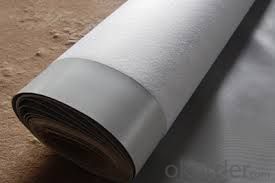
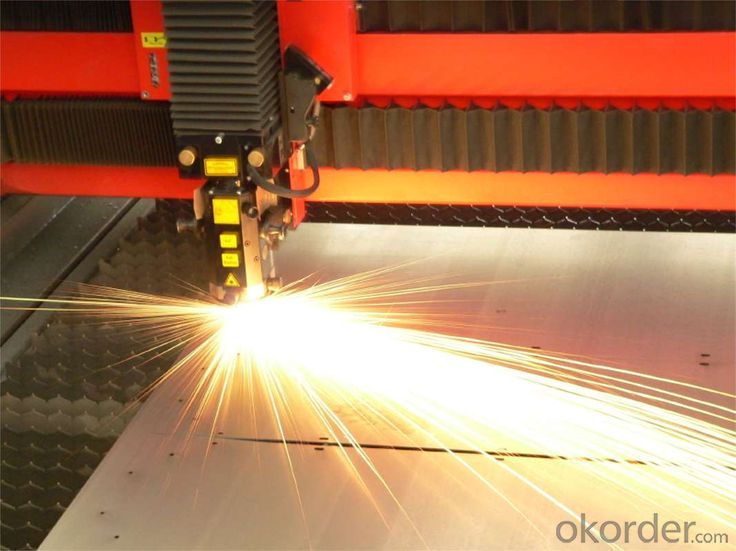
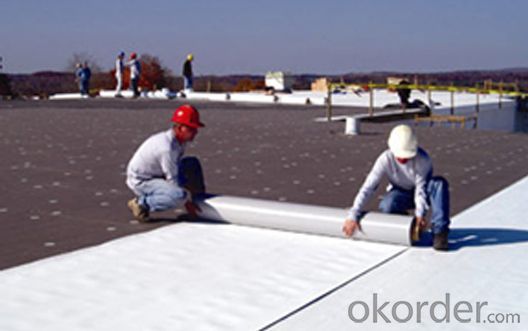
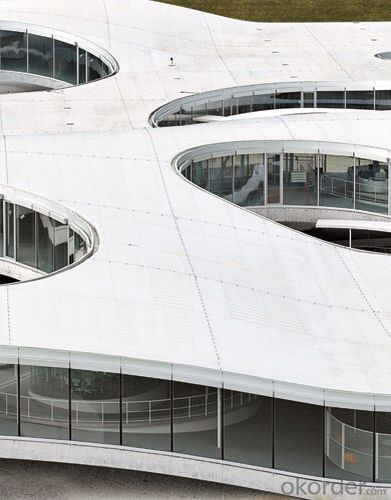
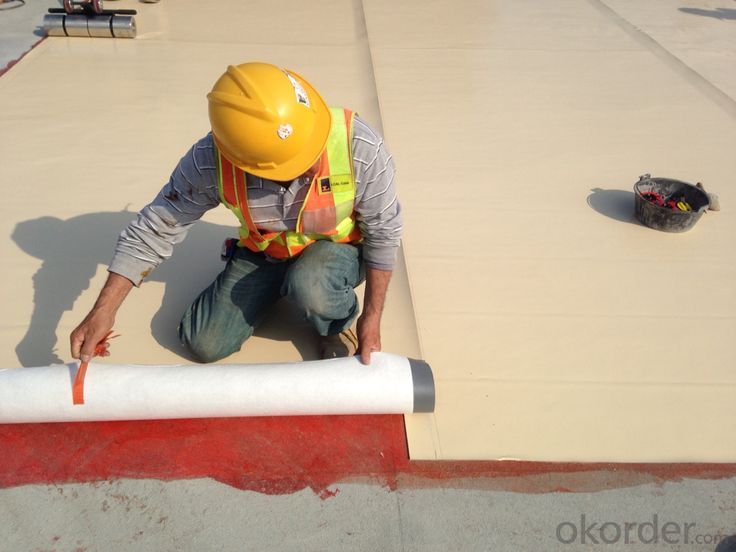
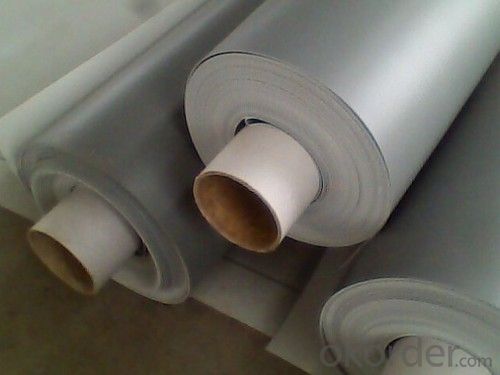
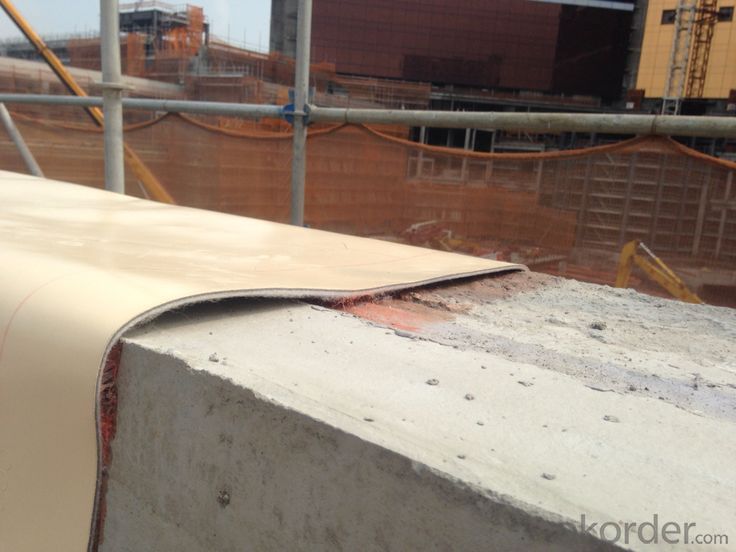


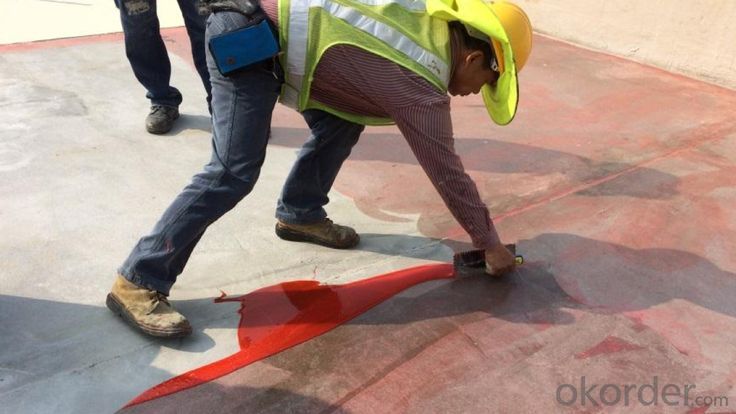
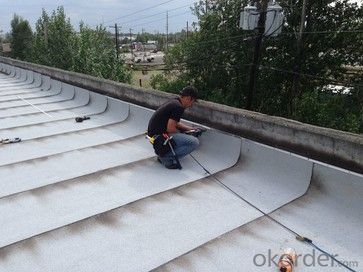
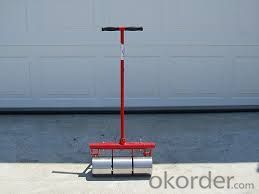
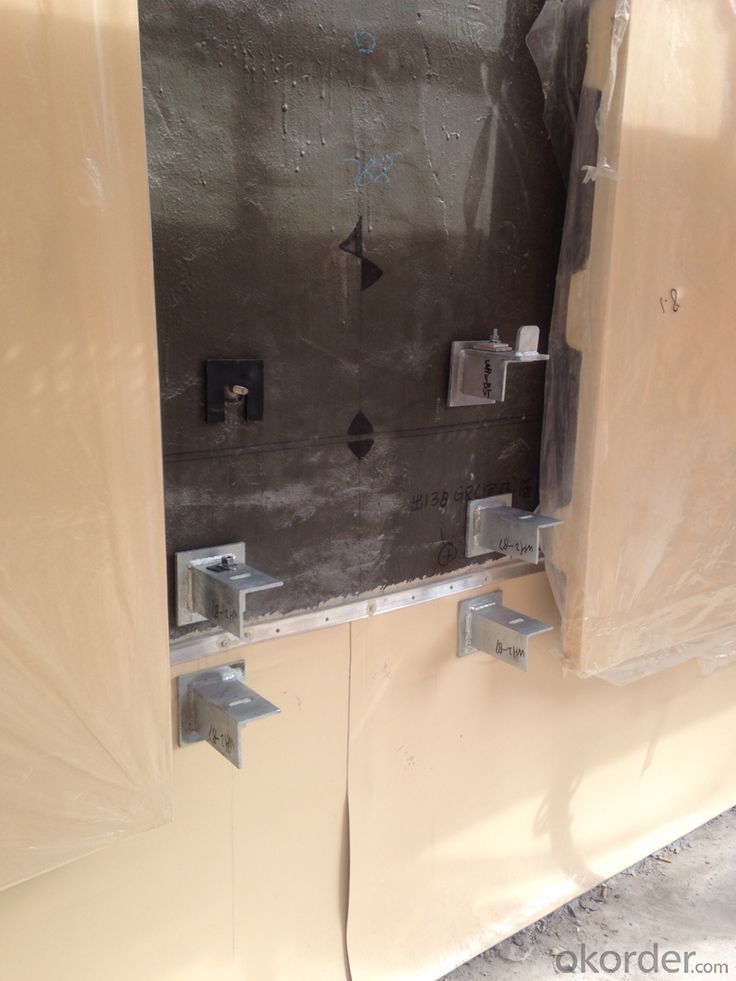


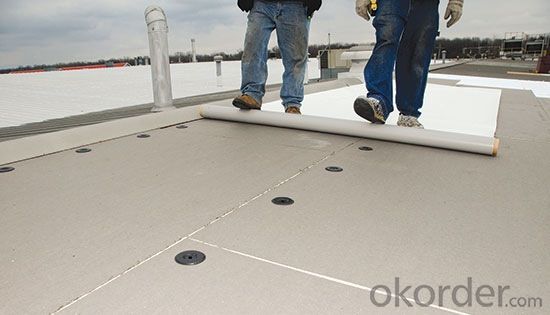
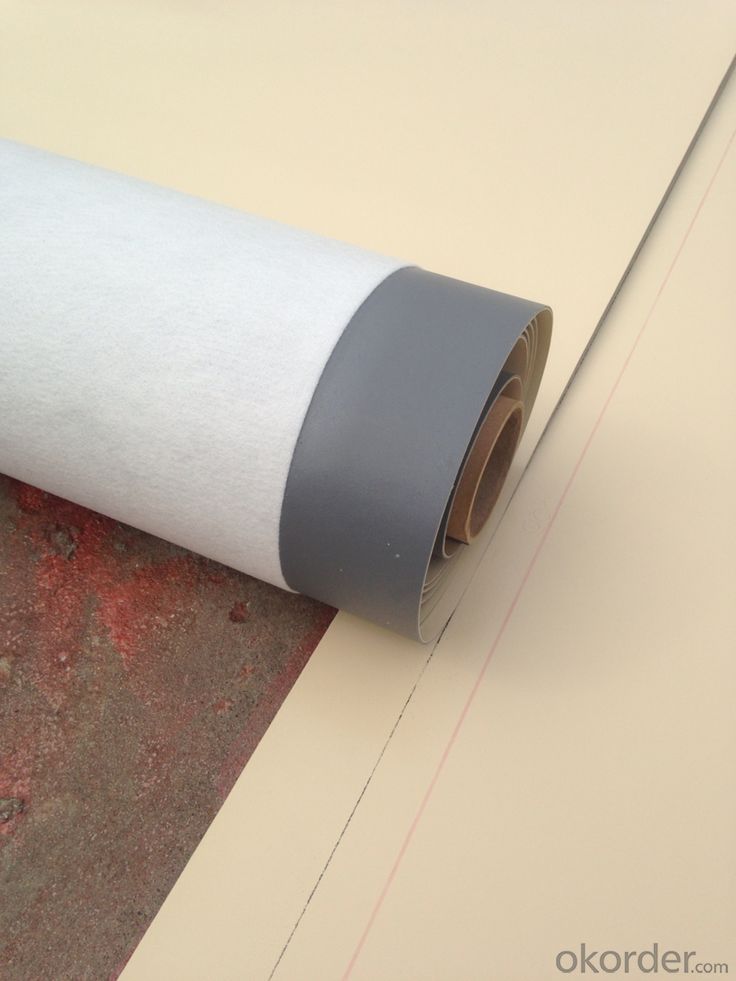
FAQ
Q: What's the delivery time ?
A: 3-5 days for 1-600 rolls, 10-15 days for container.
Q: What's the payment terms ?
A: TT/LC
Q: How do you make replacement with quality problems ?
A: New replacement will be packed into your next order or send to you directly after receive video or photo about quality problems.
- Q: Can a waterproofing membrane be used for a bridge deck construction?
- Yes, a waterproofing membrane can be used for bridge deck construction. A waterproofing membrane is a thin layer of material that is applied to the bridge deck to prevent water infiltration and protect the underlying structure from corrosion and deterioration. It is commonly used in bridge deck construction to ensure the longevity and durability of the bridge. The waterproofing membrane acts as a barrier against moisture, preventing water and other liquids from penetrating the bridge deck surface. This is particularly important for bridge decks, as they are constantly exposed to various weather conditions, including rain, snow, and ice, which can cause damage over time. In addition to its water resistance properties, a waterproofing membrane also provides protection against other elements such as UV rays and chemicals, which can degrade the bridge deck surface. By preventing water and other harmful substances from reaching the bridge deck, the waterproofing membrane helps to extend the lifespan of the bridge and reduce maintenance and repair costs. Furthermore, a waterproofing membrane can also improve the overall safety of the bridge by reducing the risk of structural damage caused by water infiltration. By keeping the bridge deck dry, the membrane helps to maintain the integrity of the bridge and prevents potential hazards such as slippery surfaces or weakened structural components. Overall, a waterproofing membrane is a crucial component in bridge deck construction as it ensures the long-term functionality and durability of the bridge. Its ability to provide protection against water infiltration, UV rays, and chemicals makes it an ideal choice for enhancing the performance and lifespan of a bridge.
- Q: Are waterproofing membranes easy to install?
- Yes, waterproofing membranes are generally easy to install. They come in various forms such as sheets, rolls, or liquid coatings, making them adaptable to different surfaces and applications. The installation process typically involves cleaning and preparing the surface, applying the membrane, and ensuring a proper seal. While some technical knowledge and tools may be required, manufacturers often provide detailed instructions and guidelines for installation, making it easier for both professionals and DIY enthusiasts. Additionally, advancements in technology have led to the development of self-adhesive membranes, which further simplify the installation process. Overall, with the right preparation and following the correct installation procedures, waterproofing membranes can be installed with relative ease.
- Q: Can a waterproofing membrane be used for roofing?
- Yes, a waterproofing membrane can be used for roofing. In fact, it is a common choice for many roofing applications. Waterproofing membranes are designed to provide a protective barrier against water infiltration, which is essential for preventing leaks and water damage on roofs. These membranes are typically made of durable materials such as asphalt, synthetic rubber, or thermoplastic, which are resistant to water and can withstand harsh weather conditions. They are installed over the roof surface and provide a seamless, watertight layer that helps to keep the interior of the building dry and protected. Additionally, waterproofing membranes can be used on various types of roofs, including flat roofs, sloped roofs, and even green roofs. Overall, using a waterproofing membrane for roofing is an effective way to ensure long-lasting durability and protection against water damage.
- Q: Can a waterproofing membrane be used on precast zinc surfaces?
- Precast zinc surfaces can indeed benefit from the use of a waterproofing membrane. These membranes are specifically designed to safeguard various surface types against water infiltration, including concrete, metal, and zinc. By creating a protective barrier, these membranes effectively prevent water from permeating the surface. This is especially crucial for precast zinc surfaces that are prone to exposure to moisture or water. The application of a waterproofing membrane to such surfaces can effectively extend their lifespan and shield them against potential water-induced damage, such as corrosion or deterioration. Therefore, it is essential to carefully choose a waterproofing membrane that is compatible with zinc and meticulously adhere to the manufacturer's instructions regarding proper application and maintenance.
- Q: Can a waterproofing membrane be used for highway or road projects?
- Yes, a waterproofing membrane can be used for highway or road projects. Waterproofing membranes are commonly used in road construction to protect the underlying layers from water damage. These membranes act as a barrier against water infiltration, preventing water from seeping into the road structure and causing deterioration. They are typically applied on the bridge decks, tunnels, retaining walls, and other areas where water exposure is high. The waterproofing membrane helps to extend the lifespan of the road by preventing moisture-related issues such as cracks, potholes, and erosion. Additionally, it can enhance the durability and strength of the road structure, improving its resistance to environmental factors. Overall, the use of a waterproofing membrane in highway or road projects can provide long-term protection and ensure the longevity of the infrastructure.
- Q: Can a waterproofing membrane be used in new construction?
- Yes, a waterproofing membrane can be used in new construction. In fact, it is often recommended to install a waterproofing membrane during the construction phase to prevent water damage to the building's foundation and structure.
- Q: Can waterproofing membranes be used on concrete countertops?
- Yes, waterproofing membranes can be used on concrete countertops. These membranes are specifically designed to prevent water penetration and can be applied to various surfaces, including concrete. By using a waterproofing membrane on a concrete countertop, you can effectively protect it from water damage, staining, and potential structural issues. Additionally, these membranes can also enhance the durability and longevity of the countertop by preventing moisture-related issues such as cracking or warping. It is important to ensure that the chosen waterproofing membrane is compatible with concrete and suitable for countertop applications.
- Q: Can a waterproofing membrane be used in hot climates?
- Yes, a waterproofing membrane can be used in hot climates. In fact, it is essential to use a waterproofing membrane in areas with high temperatures and intense sunlight. The membrane provides protection against water intrusion, which is crucial in preventing damage to structures such as roofs, balconies, or basements. Additionally, a high-quality waterproofing membrane is designed to withstand the effects of temperature fluctuations and UV radiation, ensuring its longevity and effectiveness even in hot climates. Therefore, using a waterproofing membrane is highly recommended in hot climates to ensure the durability and integrity of the structures it is applied to.
- Q: Can a waterproofing membrane be used for military facilities?
- Yes, a waterproofing membrane can be used for military facilities. Waterproofing membranes are commonly used to protect structures from water infiltration and damage, which is crucial in military facilities to ensure the integrity and longevity of the infrastructure. Additionally, waterproofing membranes can also provide additional benefits such as protection against chemical and environmental hazards, making them suitable for military applications.
- Q: How does a waterproofing membrane handle exposure to high temperatures?
- A waterproofing membrane is designed to withstand exposure to high temperatures. It is typically made from durable materials such as bitumen, EPDM (ethylene propylene diene monomer), or PVC (polyvinyl chloride) that have high melting points and can resist heat. These materials have been specifically chosen to ensure that the waterproofing membrane does not degrade or lose its effectiveness when exposed to high temperatures. The membrane's ability to handle high temperatures is dependent on its composition and quality. High-quality waterproofing membranes are manufactured with additives and fillers that enhance their resistance to heat. These additives help the membrane maintain its integrity and prevent it from softening, melting, or becoming brittle when exposed to elevated temperatures. Furthermore, the installation process of the waterproofing membrane also plays a crucial role in its ability to handle high temperatures. Proper installation techniques, such as ensuring proper adhesion and seam sealing, are essential to maintain the membrane's effectiveness and prevent any potential damage caused by heat exposure. In summary, a waterproofing membrane is specifically designed to handle exposure to high temperatures. Its composition, quality, and installation techniques all contribute to its ability to withstand heat without degrading or losing its waterproofing properties.
Send your message to us
Waterproof/Waterpfoofing Membrane For Roof
- Loading Port:
- Tianjin
- Payment Terms:
- TT OR LC
- Min Order Qty:
- 500 m²
- Supply Capability:
- 10000 m²/month
OKorder Service Pledge
OKorder Financial Service
Similar products
Hot products
Hot Searches
Related keywords




